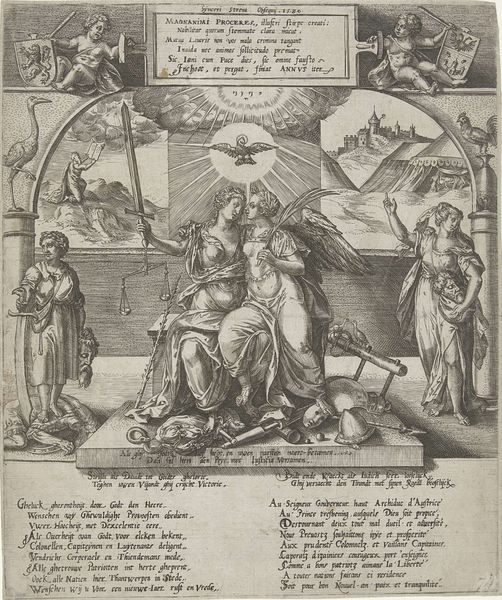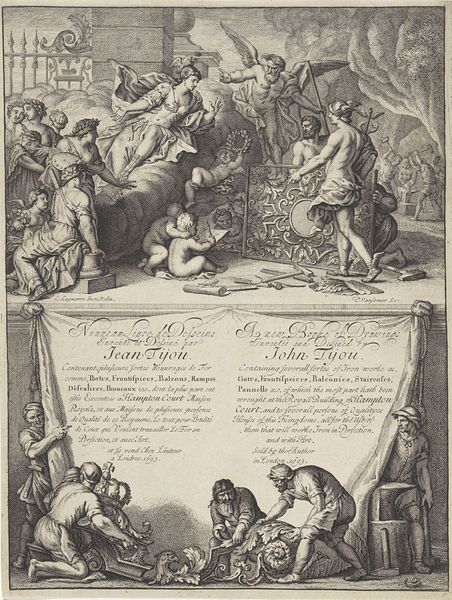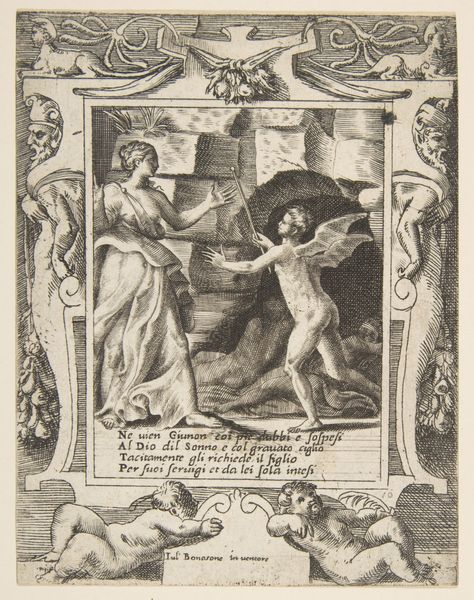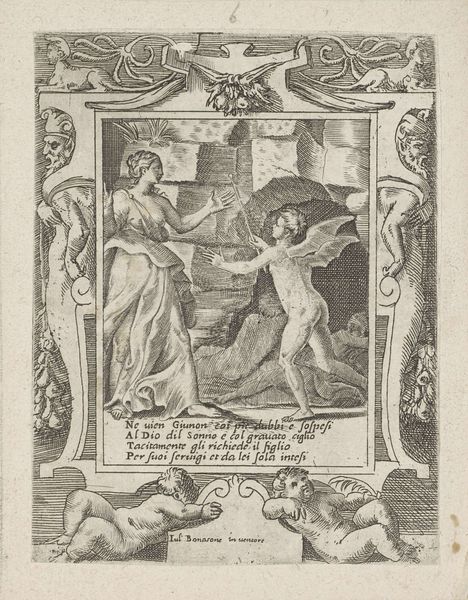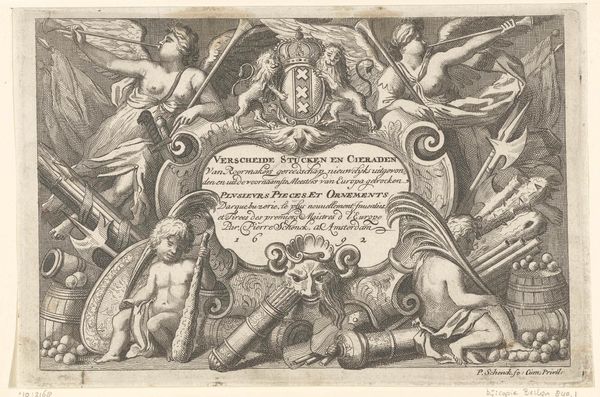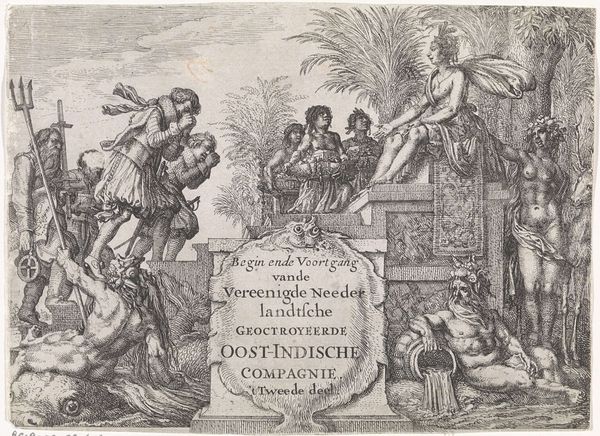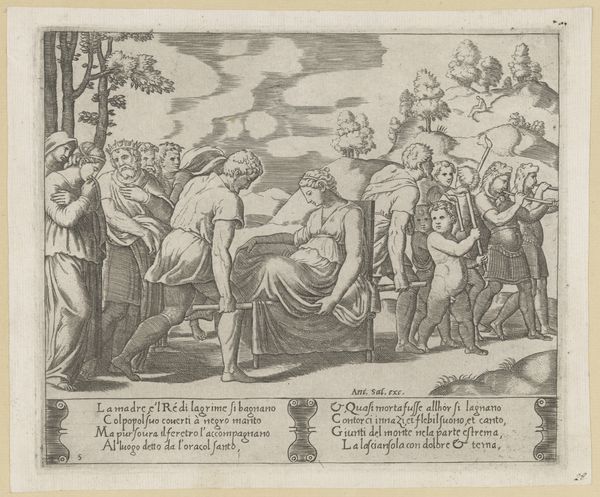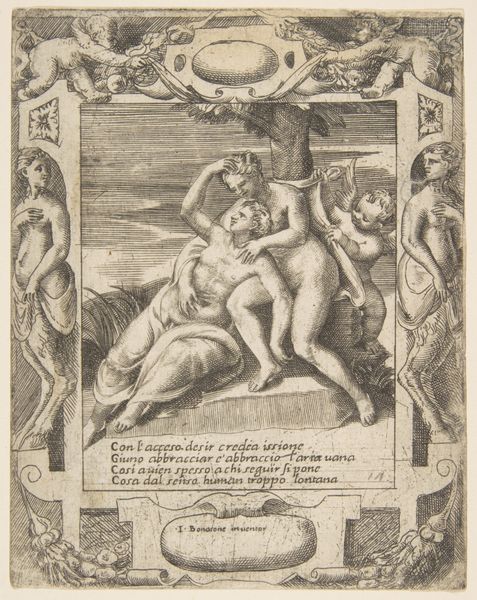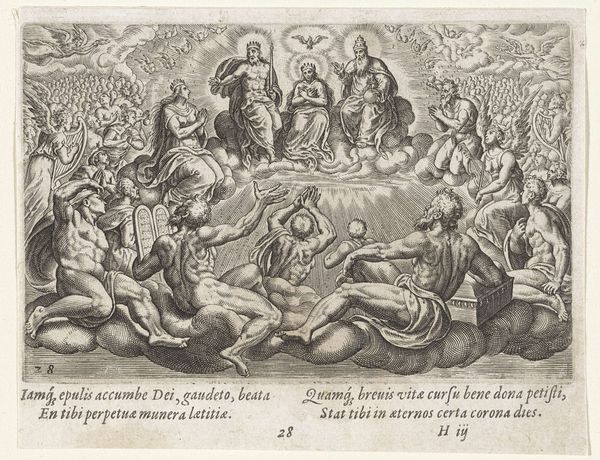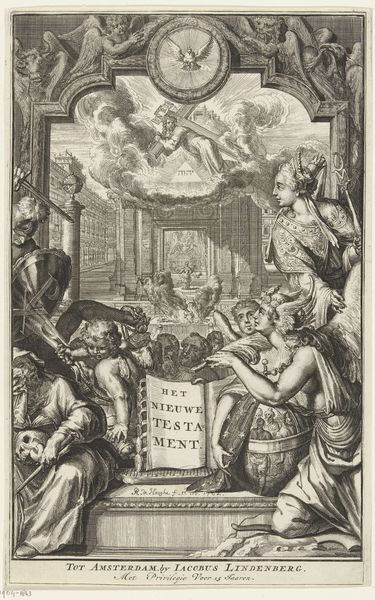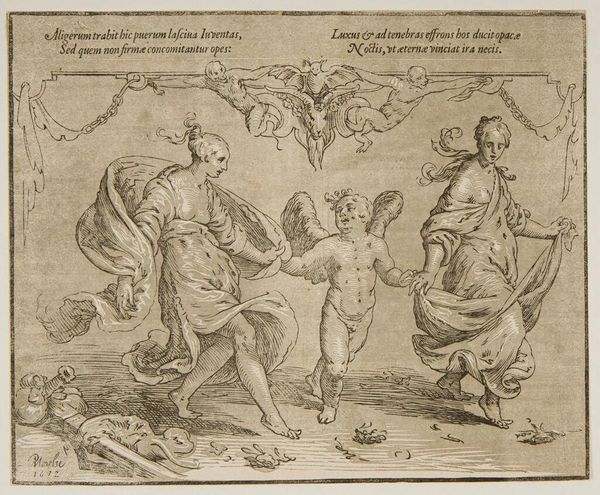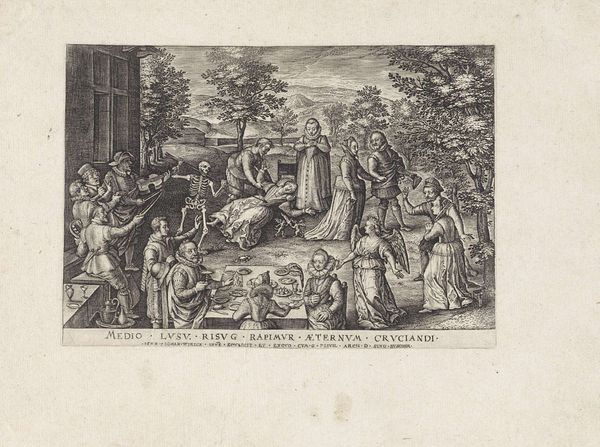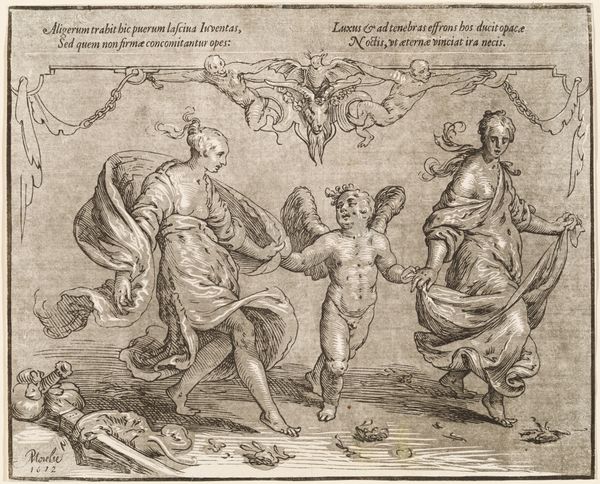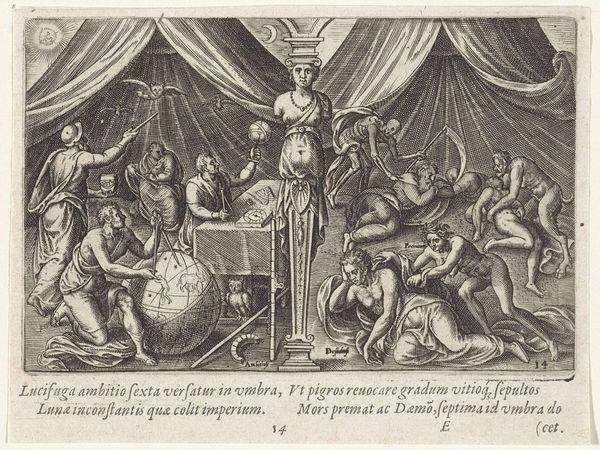
print, engraving
#
baroque
# print
#
figuration
#
genre-painting
#
history-painting
#
engraving
Dimensions: height 136 mm, width 165 mm
Copyright: Rijks Museum: Open Domain
Editor: So, this engraving, "De vijf zintuigen" from 1620 by Crispijn van de Passe the Younger, feels incredibly layered. It's so intricate and busy, with all these figures and symbols. I am intrigued by the text in the center of the scene. What draws your attention in this work? Curator: What fascinates me is how this print functioned within its socio-economic context. Engravings like this were commodities. They weren’t just art objects hanging on a wall. The production of this piece, the labour involved in creating the plate and the paper, the distribution of these prints— that speaks volumes. Consider the printing process itself. Editor: I guess I hadn't thought of it that way. Curator: Precisely. Think about who could afford these. Prints democratized images to a degree, but there was still a process involved in its creation and trade. We have a few groupings of figures surrounding the main banner; how does the social standing reflected in their costuming inform your view? How does that elevate this object into “high art” for the selected few? Editor: I see what you mean! It becomes almost a status symbol to own this print that, in its time, may have been "mass produced." What do you mean by that? Curator: Consider it relatively "mass produced". The way in which multiple impressions of a print can exist, as opposed to single works that are painted directly and which would remain far more costly, allows for access to different demographics with varying capital to exchange. Each person in this picture is participating in these sensory experiences differently, yes? Even access to sight (Spieghel means mirror, sight) depends upon class here. The materiality speaks directly to societal power structures of the Baroque period. Editor: I never considered how the very act of creation and distribution was itself part of the art's meaning. Now it gives this print another level of richness, seeing it as a product of its time and a reflection of society's values and consumption. Curator: Exactly! The material reality is always informing the image; we must trace the exchange that takes place.
Comments
No comments
Be the first to comment and join the conversation on the ultimate creative platform.
